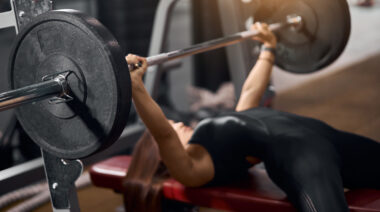Functional exercise, prehabilitation, and corrective exercises are growing exponentially and being addressed in everything from Runner’s World, Men’s Health, collegiate strength and conditioning journals, and more.
Functional exercise, prehabilitation, and corrective exercises are growing exponentially and being addressed in everything from Runner’s World, Men’s Health, collegiate strength and conditioning journals, and more.
The industry has recognized change is needed in the way we train and address injuries. Injury statistics for new runners are staggering. In 2010, Runner’s World survey results showed 60% of runners reported chronic problems.1 This trend is also apparent in other sports, in weekend warriors, and in everyday life as people become increasingly more sedentary.
Ask yourself: Have you ever experienced an injury? If so, how well did you recover? Did you take the proper time to heal, and then make sure to regain mobility, stability, and proper movement patterns? If you’re like most people the answer is no.
According to Gray Cook and the Functional Movement Screen (FMS), the number one predictor of an injury is a past injury.2 If you had previously sprained an ankle you will not necessarily sprain that ankle again, however you may incur another injury or issue such as hip pain due to improper movement patterns learned by compensating for the original injury. Are you a ticking time bomb?
Injury prevention and corrective exercise are prescribed for the masses with zero progression or assessment. Without an effective unbiased screen, this is like shooting in the dark and hoping to hit the target. Even worse, performing unnecessary corrective exercises can negatively alter movement patterns that don’t need to be changed. If it’s not broke, don’t fix it!
What Is a Screen?
A screen is a test which assesses movement patterns, mobility, and stability. Think of movement patterns as your coordination, whether everything is firing in the correct order, mobility as your range of motion, and stability as your ability to balance or steady yourself.
An effective screen will have scoring criteria based on scientific research, such as the Functional Movement Screen.
Prescribing Corrective Exercise and What Is the Goal?
Corrective strategies must be based on a screen with specific standards. If there is no definitive, measurable test, we cannot ensure the reliability of results to most effectively help clients and ourselves.
The goal of corrective exercise is to begin at the most appropriate level and steadily advance to regaining normal functions. People should eventually resume training at their previous levels and progress beyond this with a lower risk of injury than before.
Below is a training structure built using both the FMS and National Academy of Sports Medicine Optimal Performance Training (NASM OPT) models.3
This comprehensive program approach allows linear progression through an appropriate corrective and training sequence. The program starts with the fundamental movement requirements and steadily progresses to more advanced training methods.
Corrective Pattern Sequence
- Mobility – reestablishing functional range of motion using: static, dynamic, active isolated4, and proprioceptive neuromuscular facilitation stretching5; self-myofascial release6 – foam roller, lacrosse ball, Theracane, etc.7; and range of motion movements
- Static Stability – using the joint/muscle/movement pattern that stresses the area needing correction by moving other joints and requiring it to remain static
- Dynamic Stability – moving the joint/muscle/movement patterns through a range of motion requiring dynamic motor control
- Full Re-patterning of Movement –moving correctly through a full range of motion
- Strength –loading the movement pattern and developing force output gains
- Power – applying maximum force quickly
- Performance –sport/activity-specific training
Can Self-Screening Be Effective?
Yes, if several criteria are met. First you have to throw your ego out the door, and view yourself objectively. You must follow the screening criteria and then evaluate your performance without bias, without trying to simply beat the test. The end goal of the screen is reliable information so that you can use to make an accurate assessment of your ability and where to begin improvement.
You may ask: How the heck am I going to use this information? This week we will look at a deep squat assessment, how to score it, and how to utilize the results.
The setup: Stand with your feet shoulder-width apart and 0 to 15 degrees externally rotated.
The test: Squat to below parallel, which is defined by the hip crease, passing below knee level, while maintaining a flat back. Pause and then return to standing position.
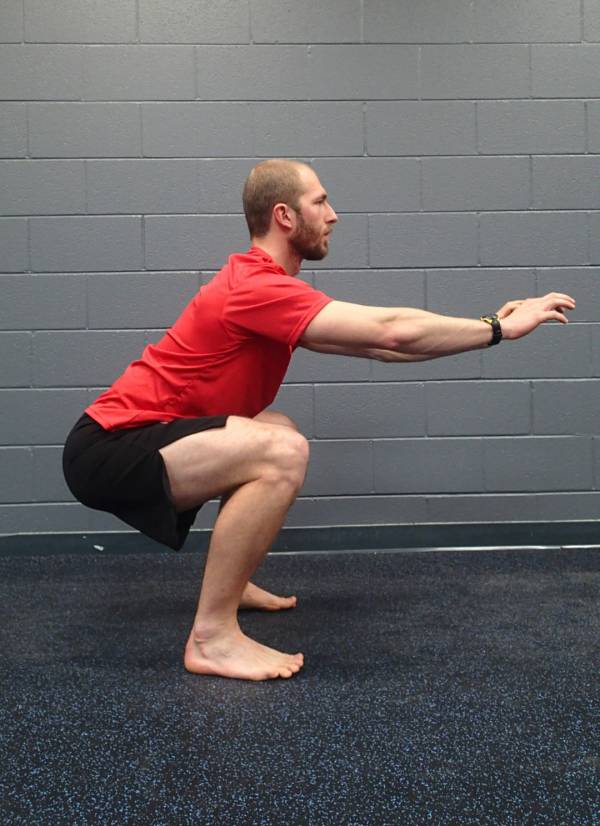
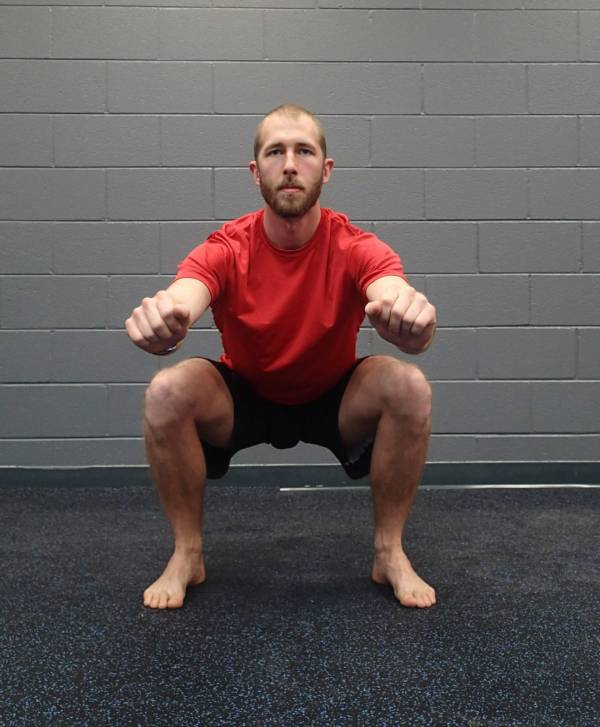
Photos illustrate proper form meeting all criteria for a perfect screen.
Criteria for the screen are:
- Controlling the squat tempo from top to bottom, pausing for a moment, and returning to standing
- Keeping a straight back
- Knees tracking directly over the feet
- Having no loss of balance
- Feet remain flat on the floor
- Keeping a neutral head position
The four major faults are illustrated below:
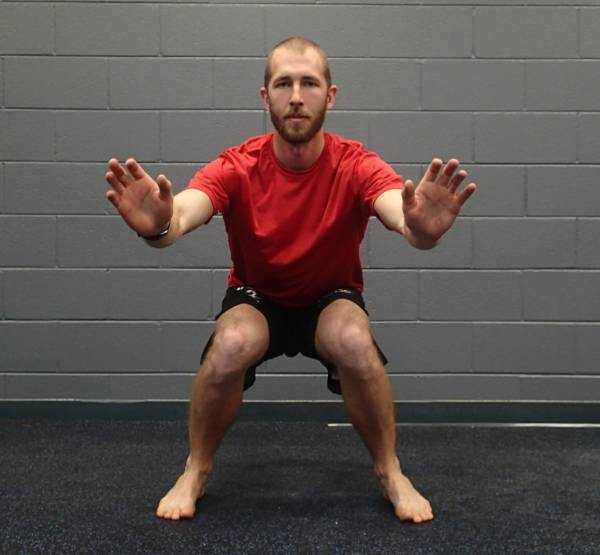
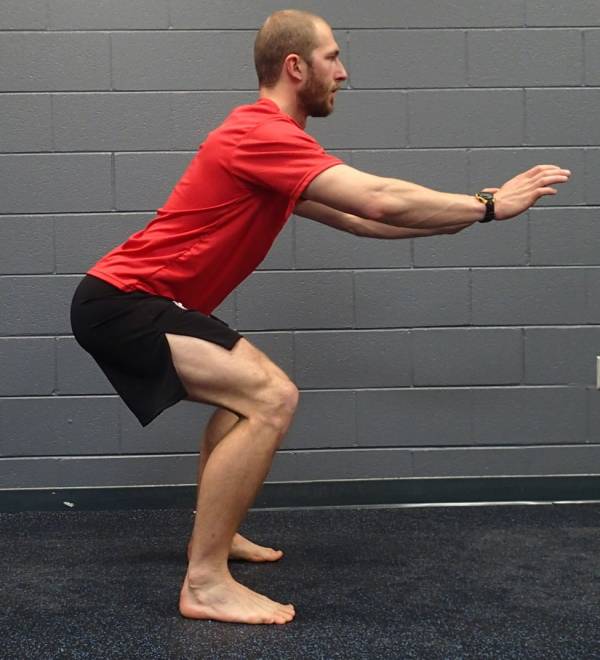
Left photo: knees collapsing in. Right photo: lack of depth.
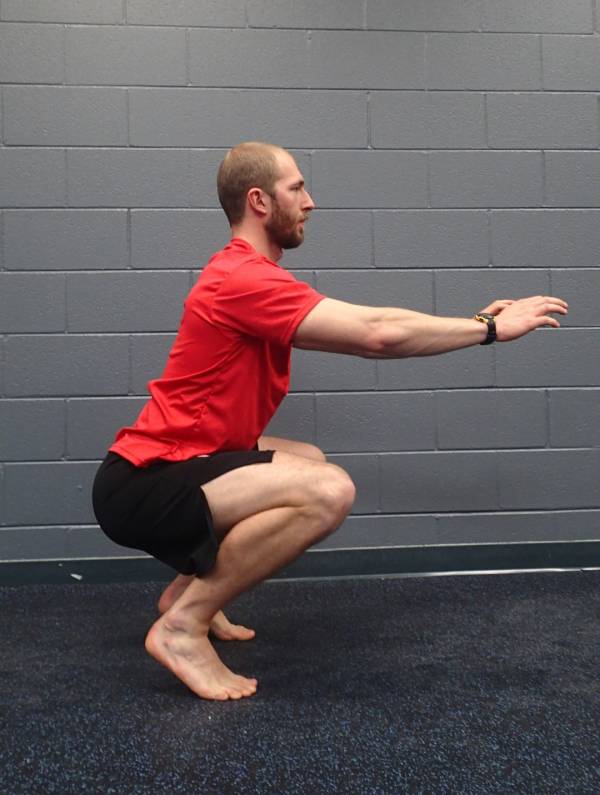
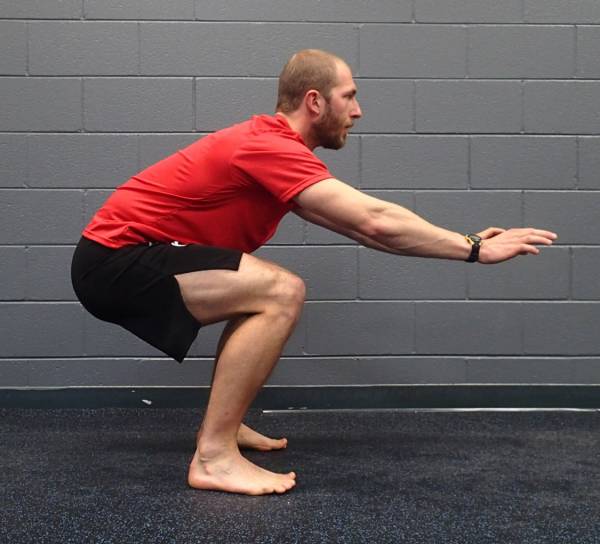
Left photo: feet not flat. Right photo: rounded back.
Deep Squat Corrective Pattern Sequence
- Mobility – Stretch your calves, hip flexors, quads, and groin. Here are examples of basic calf stretches.
- Static Stability – Hold a squat in the bottom position. Practice with wall squats or using assistance, such as a TRX, to assist in holding proper form.
- Dynamic – Assisted squats using a TRX, pole, doorframe, etc.
- Full re-patterning of movement – Squat to full depth, and return to standing. If still having difficulty, use a pole, doorframe, or other assistance to regain proper form at the bottom and drive up under control. Start with your heels on a 10 or 25 pound plate, then begin to reduce your heel lift with smaller plates until you can return to the ground barefoot, and squat with correct form.
- Strength – Kettlebell goblet squats or front squats are recommended, they place emphasis on form and an upright torso, as opposed to back squats.
- Power – Performjump squats, focusing on full range of motion and correct landing. Utilize speed or banded squats with a barbell.
- Performance – Tailor sets and reps to your specific interest. Strength sports should continue to utilize power and performance exercises, where endurance sports focus on maintaining an appropriate level of strength and power, while working on other sport-specific training.
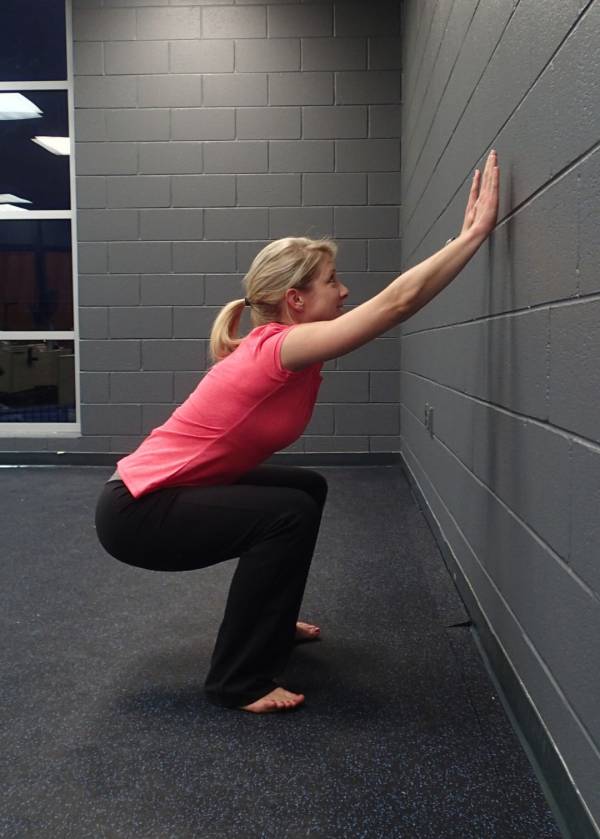
If you are struggling with keeping your back straight, face a wall with your feet 6 to18 inches from it, and work to actively pull down into the squat using your hip flexors. (See photo to the right.) Start out farther and work your way in, keeping your arms in front of you and elevated, but don’t lean on them for support.
If you struggle with keeping your knees tracking directly over your feet, find a stretch band to secure around your knees to help activate the external rotators of your hips. (See photos below.)
This is called reactive neuromuscular training. Essentially, your knees are tracking in, the band pulls them farther in, and your body reacts by correcting the movement. As you begin to feel comfortable with the resisted squats, gradually reduce the tension until you are back to none.
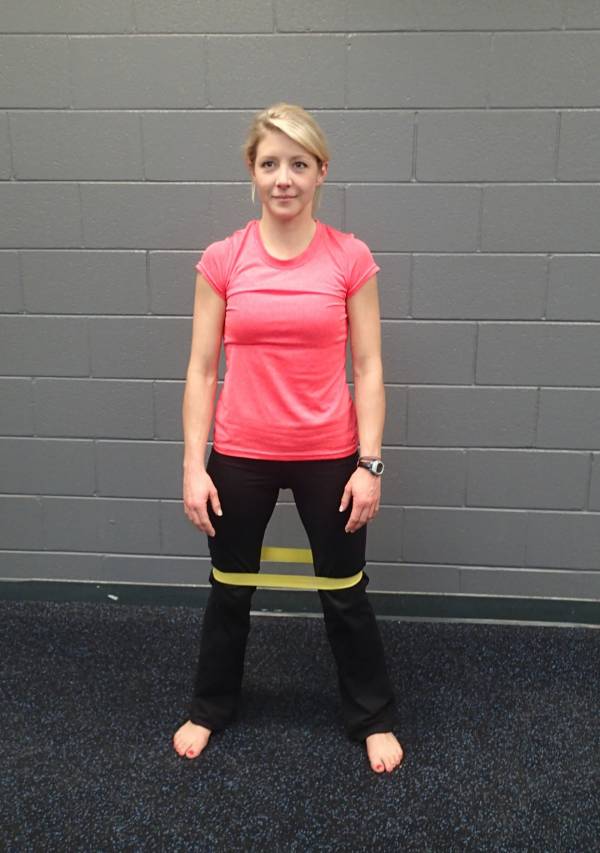
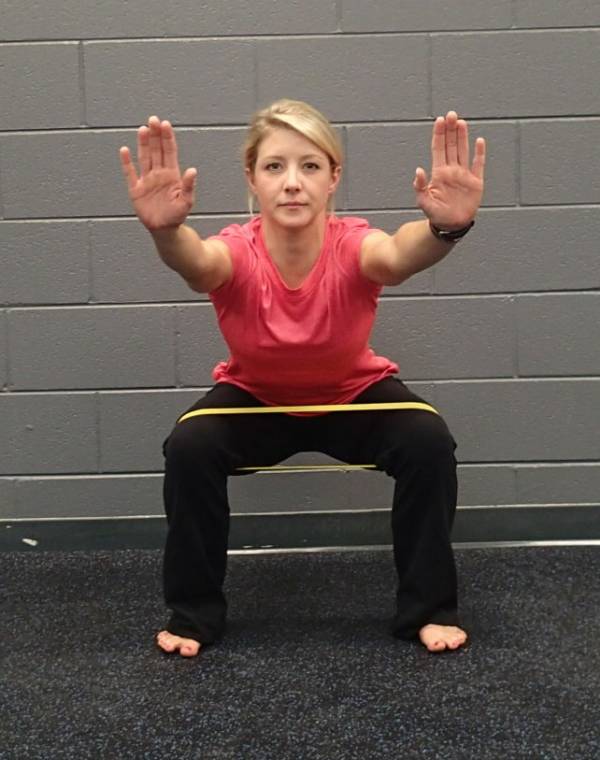
Good luck, and see you next week with a new screen and correctives.
References:
1. “The 10 Laws of Injury Prevention,” last modified January 29th 2010
2. https://www.functionalmovement.com/
3. https://www.nasm.org/trainer-resources/downloads
4. “Beginners Guide to Active Isolated Stretching,” last modified January 6th 2009 http://www.coreperformance.com/knowledge/training/active-isolated-stretching.html
5. “PNF Stretching” accessed January 25th 2013 https://www.stretching-exercises-guide.com/pnf-stretching.html
6. “Myofascial Release,” accessed January 25, 2013 https://en.wikipedia.org/wiki/Myofascial_release



